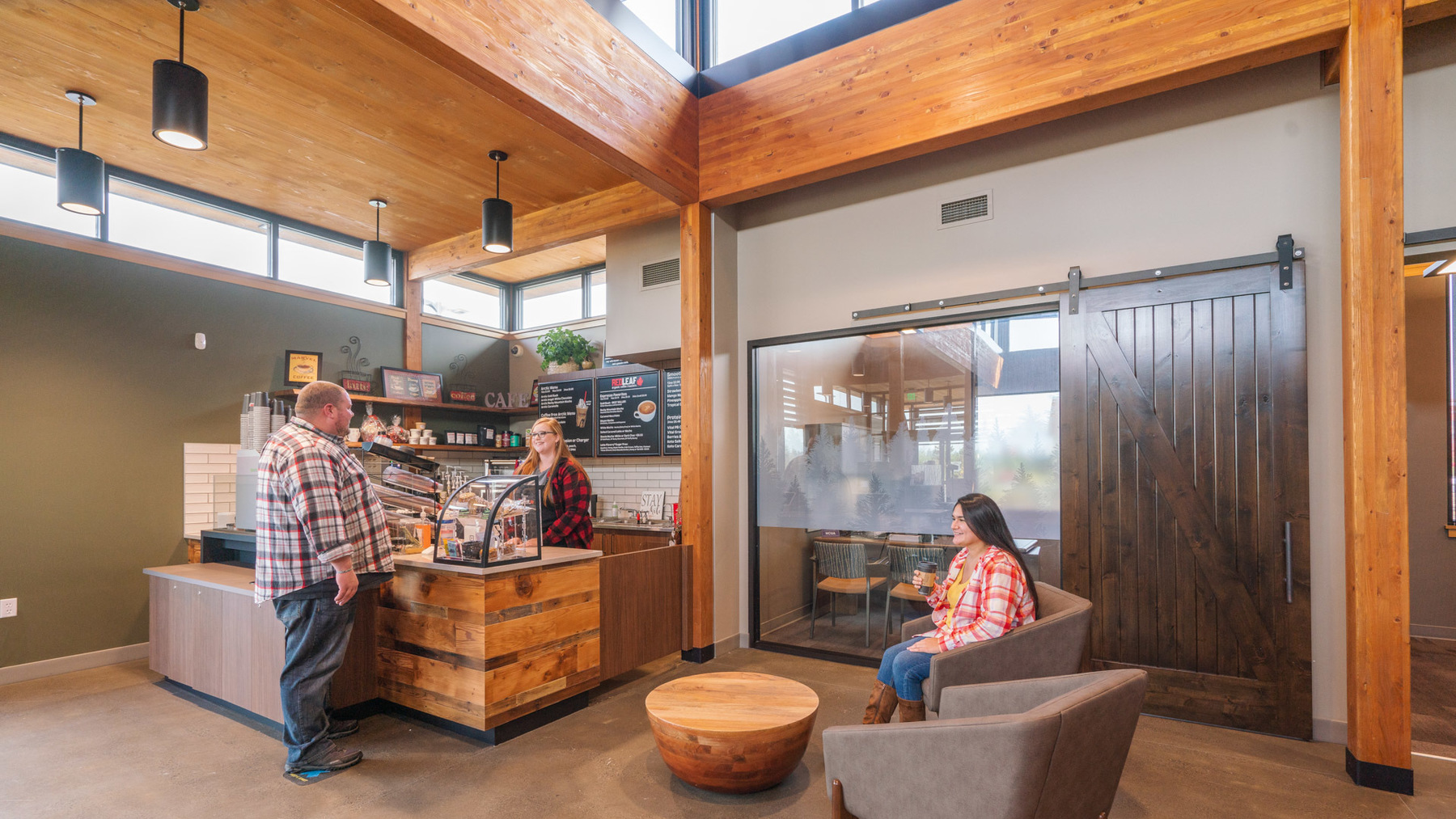With more members moving to digital banking and a convergence around standard digital experiences, your brand and your branch experiences are becoming much more important differentiators. They represent an opportunity to create deeper connections with your members by helping them feel what your credit union is about rather than telling them.
We recently invited branding expert Catherine Carr, founder and Chief Inspiration Officer at Vitamin C and driving force behind our own Momentum brand, to join a conversation around this topic and weigh in on what credit unions can hope to achieve by investing in branded branch environments and how they can move towards these goals.
Watch the full webinar recording!
The end goal is to really give people a reason to come into the branch, and to not only connect with your brand but your people as well. It’s these personal interactions that build strong member relationships, both growing your membership and inspiring engagement and loyalty.
One of the focal points of this conversation was NIH Federal Credit Union. The medical industry embodies this idea that is both clinical and makes people feel healthier, more energetic, and relaxed. But it’s one thing to tell people this, another entirely to embody it in the physical environment.
Momentum’s design team worked with NIH Federal Credit Union to create a space that balances clean, clinical surfaces with warm and vibrant materials and plants that make the atmosphere come alive.
They had nice looking spaces and a lot of branding on the walls that told you they were a part of the biomedical community, but the space didn’t really help you feel like you were part of supporting people’s health and wellness"
“The environment transitioned into this space that really helped people feel calm and feel relaxed,” said Mark Alguard, Momentum’s President and Director of Client Strategy. “It’s different from the past, even for this credit union, where they had nice looking spaces and a lot of branding on the walls that told you they were a part of the biomedical community, but the space didn’t really help you feel like you were part of supporting people’s health and wellness.”
Catherine brought up the scientific evidence around the sense of biophilia introduced by adding plants and a green wall to the clean, modern design, adding that this really works to put people at ease in the environment.
Yet embarking on this mission of better branded environments can be a challenge, as the goals are less discrete and harder to define. As Catherine put it, “it’s hard to measure ‘do X and get Y’” in this type of project.
Yet breaking away from this thinking can be a powerful tool.
One of Catherine’s clients had an issue with customer engagement and retention. Looking into the issue, she discovered that employees were incentivized on hard metrics such as new membership enrollment, which caused employees to focus on transactional relationships and left customers feeling neglected.
Her solution was simple: reframe the business model to creating positive experiences around the organization’s brand. The employees focused on creating these positive experiences, and the original metrics that they had focused on went up naturally as customers better engaged with the organization.
To attract and retain members in the post-pandemic age, where products and digital services are becoming standardized, it’s going to be even more important for credit unions to create relevant branch experiences that draw people in and engage them. And this often means taking a step back, looking at the big picture, and putting experiential goals ahead of hard metrics.


